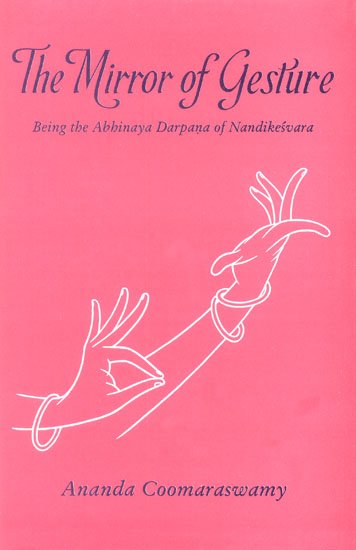Abhinaya-darpana (English)
by Ananda Coomaraswamy | 1917 | 16,981 words | ISBN-13: 9788121500210
The English translation of the Abhinaya-darpana (“the mirror of gesture”) by Nandikeshvara: an encyclopedic manual of the art of gesticulation. It belongs to a wide range of literature known as Natya-shastra: the ancient Indian art of dramatic performance, theatrics, dance and music. The Abhinaya Darpana is an abridgement of the Bharatarnava, a m...
Chapter 21 - Hands denoting Famous Emperors
The following are mentioned in another book:
Hands of Famous Emperors.—
Hariscandra, Sukaṭuṇḍa.
Sagara, Alapadma on the head.
Ambariṣa, Kartarī.
Śibi, Kapittha hand waved forwards.
Kārttivīrya, two Patāka hands at the shoulders in deva-vibhāvana.
Rāvaṇa, the same hands with widely separated fingers, feathered.
Dharmarāja, hands waved near the arms.
Arjuna, Tripatāka moved forward again and again.
Bhīma, Muṣṭi hand moved forward.
Śaibya, Sūci hand with the finger twisted upward.
Nahusa, the hand moving.
Vayāti, Tāmracūda.
Bhagīratha, Ardha-candra hand made like Tripatāka, and this is also used for an eclipse of the moon (lit. seizing by Rahu).
For the Lords of the Earth Mandhātā and Marutvān, Mukula, Sūci and Muṣṭi hands and the Ardha-patāka twisted upwards touching the body, these four hands are used in order.
For the great Kings Raghu and Aja, Ardha-patāka hands as aforesaid are used respectively right and left.
Daśaratha, Ardha-patāka hands crossed.
For Rāma the Śikhara hand, and also for other kings who bear the bow.
For Bharata, Śikhara hand held on the right shoulder.
For Lakṣmaṇa, the same on the left shoulder.
For Satrughna, the same on the face. If these are done with the left hand on the left shoulder, it indicates those of the Lunar race.
